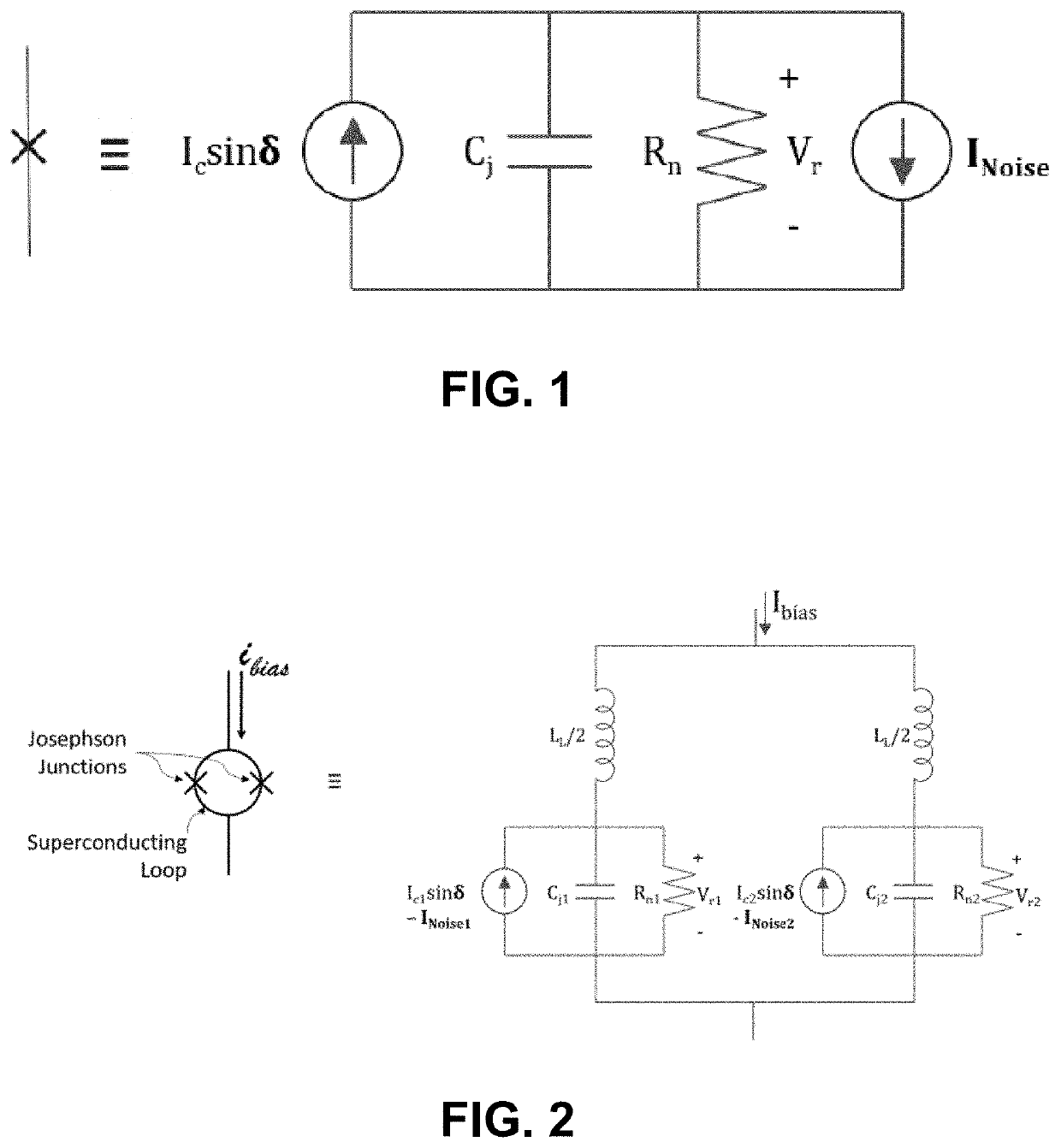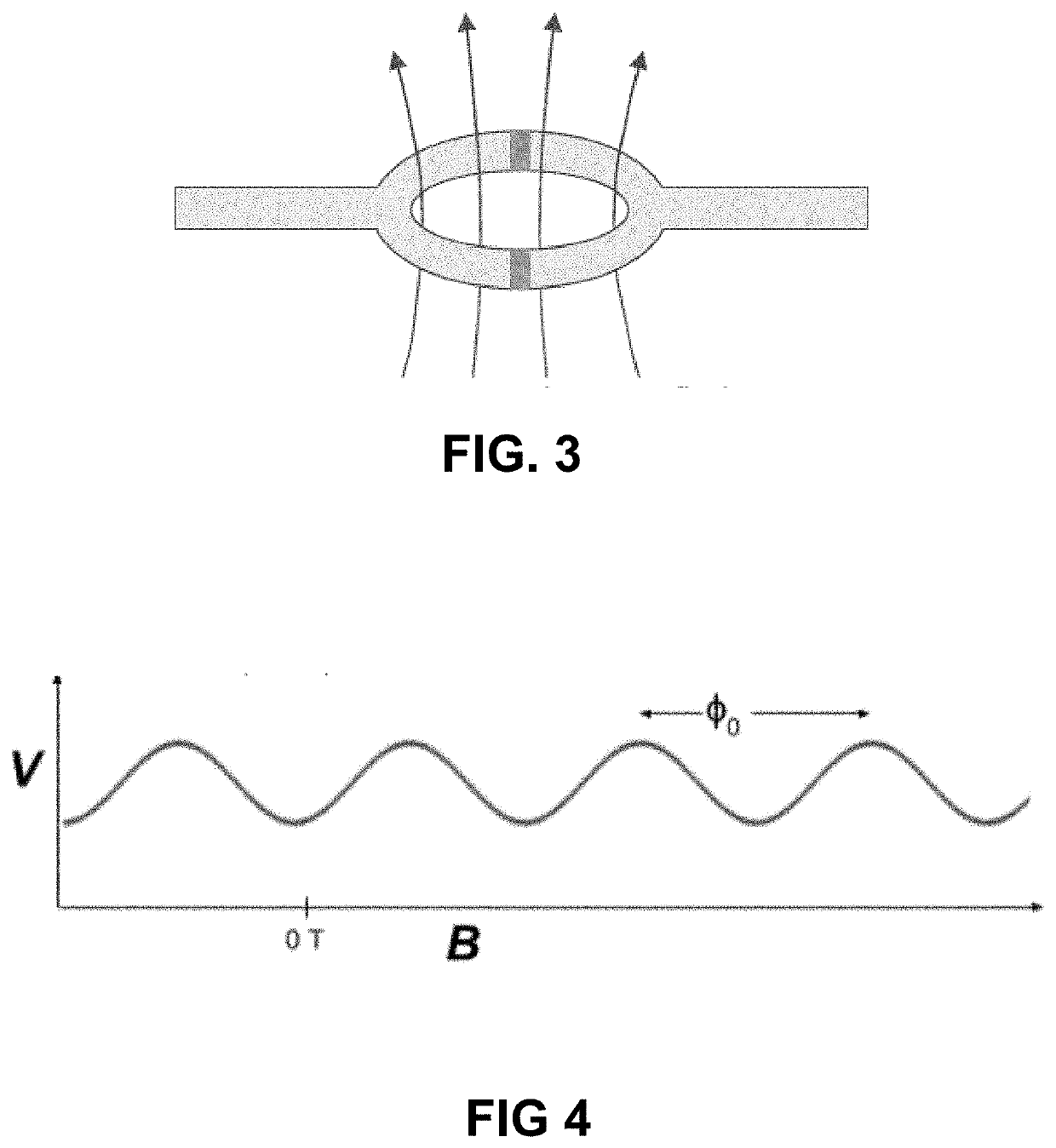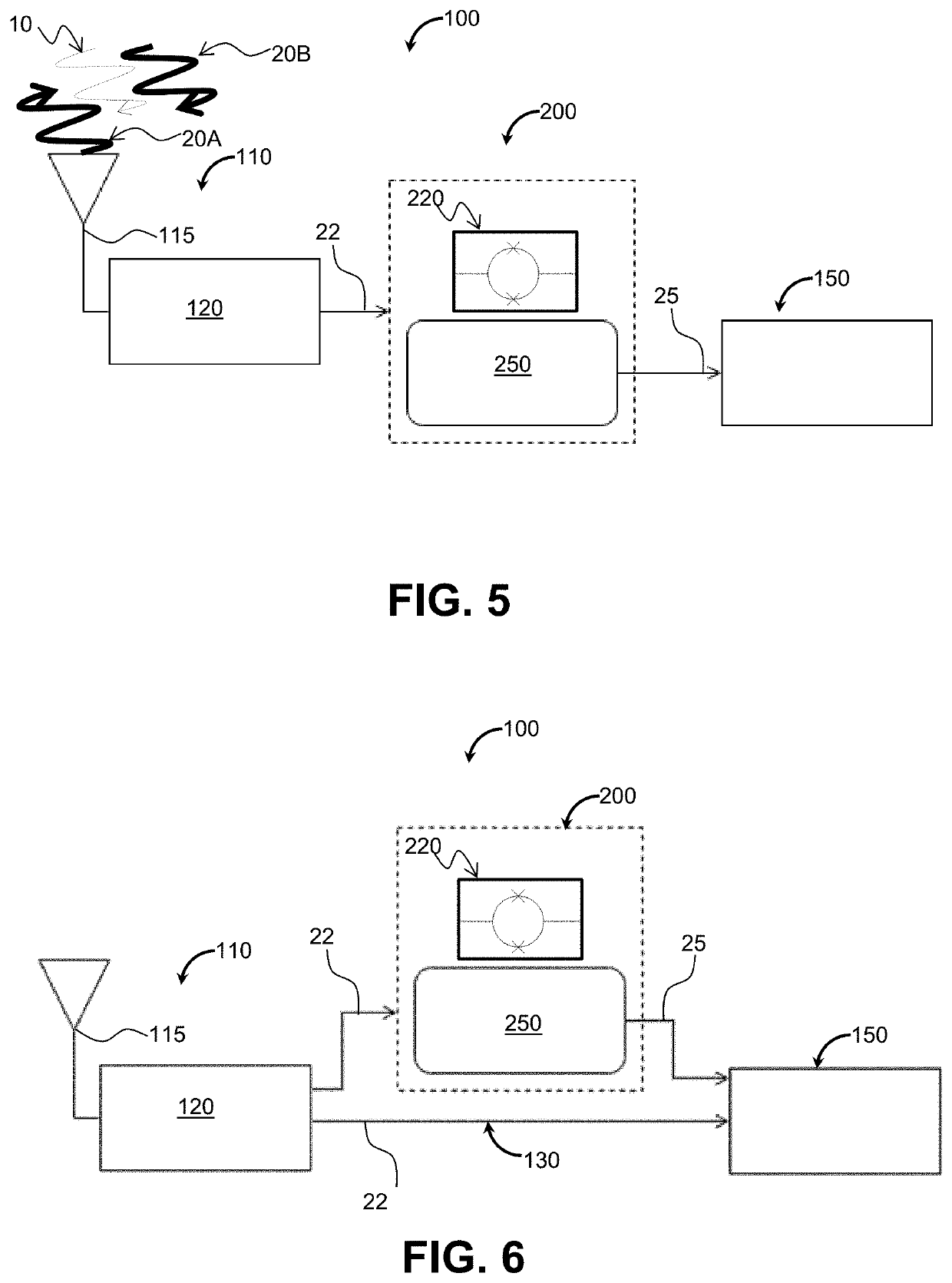Dynamic range module, system and method
- Summary
- Abstract
- Description
- Claims
- Application Information
AI Technical Summary
Benefits of technology
Problems solved by technology
Method used
Image
Examples
Embodiment Construction
[0038]Aspects of the present disclosure relate to a dynamic range module, system and method in general. Aspects of the present disclosure also apply to the dynamic range module, system and method being implemented into devices benefiting from dynamic range such as radios, radar, signals receivers, or test and measurement equipment. The dynamic range module uses one or more superconducting quantum interference devices (SQUIDs) to increase the dynamic range of the system. The disclosure relates to measuring and processing signals, and more particularly to increasing the ratio of a maximum signal to a minimum signal that a system can process.
[0039]Any device that produces an output signal that is periodic with respect to an input signal can be used to create the dynamic range module. One example of a device that produces a response that is periodic with respect to its input is a superconducting quantum interference device (SQUID). A SQUID produces a voltage response that is periodic wi...
PUM
 Login to View More
Login to View More Abstract
Description
Claims
Application Information
 Login to View More
Login to View More - R&D
- Intellectual Property
- Life Sciences
- Materials
- Tech Scout
- Unparalleled Data Quality
- Higher Quality Content
- 60% Fewer Hallucinations
Browse by: Latest US Patents, China's latest patents, Technical Efficacy Thesaurus, Application Domain, Technology Topic, Popular Technical Reports.
© 2025 PatSnap. All rights reserved.Legal|Privacy policy|Modern Slavery Act Transparency Statement|Sitemap|About US| Contact US: help@patsnap.com



